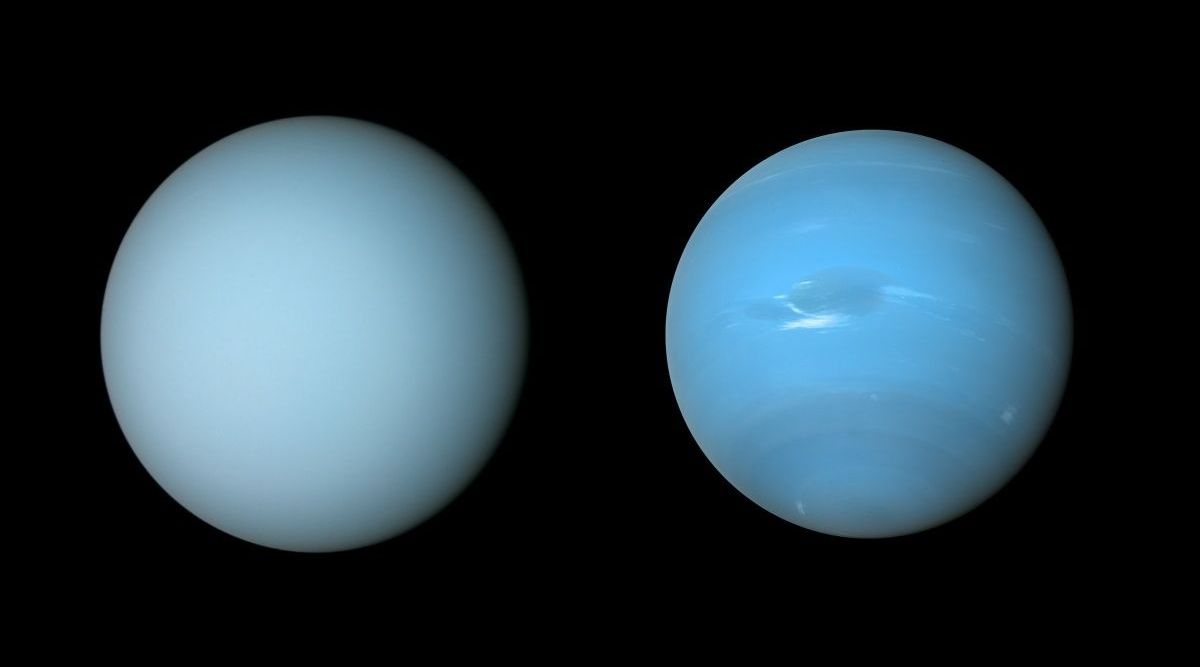 Uranus (left) and Neptune (right) are different shades of blue despite the many similarities they share in terms of mass, size and composition. (Image credit: NASA/JPL-Caltech/B. Jónsson via University of Oxford)
Uranus (left) and Neptune (right) are different shades of blue despite the many similarities they share in terms of mass, size and composition. (Image credit: NASA/JPL-Caltech/B. Jónsson via University of Oxford)Neptune and Uranus are solar system neighbours and they have a lot in common: similar masses, sizes and atmospheric compositions but Neptune looks distinctly bluer than Uranus. New research led by Professor Patric Irwin at the Department of Physics, University Oxford, suggests that a hazy layer that exists on both planets is behind the different shades of blue. If it weren’t for this haze, both planets would look equally blue.
A team of international researchers used observations from the Hubble Space Telescope, the NASA Infrared Telescope Facility and the Gemini North telescope to describe aerosol layers in the atmospheres of both planets.
“This is the first model to simultaneously fit observations of reflected sunlight from ultraviolet to near-infrared wavelengths. It’s also the first to explain the difference in visible colour between Uranus and Neptune,” explained Irwin, lead author of the paper published in the Journal of Geophysical Research: Planets, in a press statement.
The team’s model predicts three haze layers at different heights in the atmospheres of Neptune and Uranus. The middle layer of haze particles on Uranus is reportedly thicker than the one on Neptune.
Methane ice condenses on the particles in the middle layer of haze, which forms a shower of methane snow that pulls haze particles deeper into the atmosphere. Once there, the haze particles can promote the condensation of hydrogen sulphide ice, forming a separate, deeper layer of haze.
Best of Express Premium
Neptune’s atmosphere is more active and turbulent than that of Uran, suggesting that the former is more efficient at churning up gaseous methane into the haze layer where it can condense on the haze particles and produce this snow. This removes more haze and keeps Neptune’s haze layer thinner and thereby making Neptune appear bluer. The excess haze on Uranus builds up in the planet and gives it a lighter tone.
The research also indicated the presence of a second, deeper layer in the model that, when darkened, could account for dark spots occasionally visible on Neptune and less often on Uranus. Astronomers were already aware of these dark spots on both planets but they didn’t know which haze layer was causing them.
- The Indian Express website has been rated GREEN for its credibility and trustworthiness by Newsguard, a global service that rates news sources for their journalistic standards.

